Busting 6 Food Myths to Save Your Health and Your Wallet
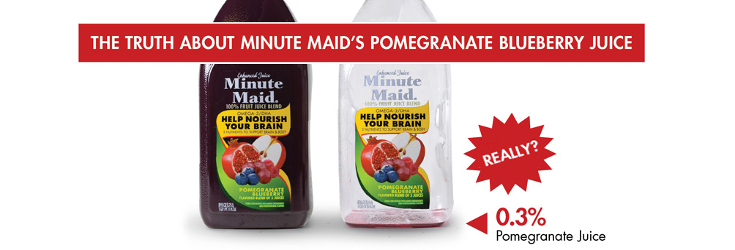
With food prices rising every year while incomes continue to stagnate, going grocery shopping can turn into a real squeeze for anyone looking for top nutrition. One thing we can do to make ends meet is to drop the illusions we have been conditioned to think are truths. Most of these illusions have been created for the purpose of selling us a product that we could do quite well without. Slaying these illusions can help save big money over time.
Here are 6 widely accepted food myths that, when busted, will help you not only save your health, but also your wallet.
Myth #1. If the Product Says it’s ‘Healthy,’ it’s a Good Buy
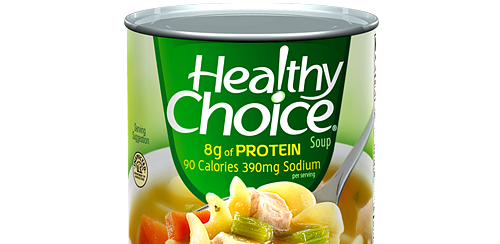
The food company making the product that says ‘healthy’ is using this buzz word to get sales, not because the product is actually healthy. In fact, many of the foods that advertise themselves as being ‘healthy’ are loaded with unhealthy ingredients.
As an example let’s look at canned chicken noodle soup, a simple food in a line known as Healthy Choice. Besides the usual chicken and noodles, this soup contains:
- Monosodium Glutamate – A substance toxic to brain cells.
- Soy and Corn – Odds are great that these are both GMOs, since this soup is not organic.
- Carrageenan – An indigestible gum that replaces real fat and has been found to cause intestinal damage and increased permeability, a condition that leads to leaky gut syndrome.
- Caramel Color – Classified by the state of California as a known carcinogen and shown in animal testing to cause lung, liver, and thyroid cancer and leukemia.
- High Fructose Corn Syrup – Linked to obesity, weight gain, hypertension, liver damage, and mercury exposure.
Compare this to a can of organic black beans that makes no claim about being ‘healthy,’ but contains nothing but organic black beans, water and sea salt, and sells for substantially less than the chicken soup. There is a big difference.
Myth #2. The Most Important Foods to Buy Organic are Fruits and Vegetables
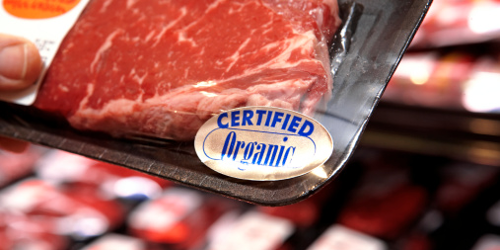
It’s easy to understand why many people think this is true, since articles voicing this notion abound. Though while fruit and vegetables should indeed be organic, buying organic meat and dairy products should also have top priority if you’re on a budget. This is because most conventionally raised cattle used for food have been confined to filthy feedlots that are cesspools of manure and disease. They are fed almost entirely with GMO soy and corn, and may have been given a growth stimulating drug, known as ractopamine, up until just before slaughter and without any clearance time.
The harshest chemicals and pesticides are relentlessly used in producing the corn and soy used as animal feed. The bodies of these animals store their toxicity in their fat, so if you are consuming fatty meats or conventionally produced full fat dairy products (the best kind to consume), you are sharing the toxic load with the animals. Toxicity travels up the food chain.
Myth #3. The Food Sold in Healthy-Image Grocery Stores is All Organic
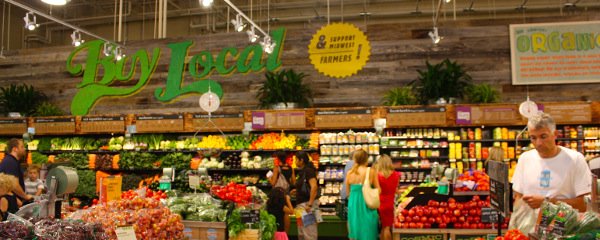
Whole Foods, Lucky’s Market, Trader Joe’s, and many others are in the healthy image grocery business. These are probably good places to shop once you have lost the illusion that all the items they sell are organic. Whether it is meats, fresh produce, canned goods, cereal, drinks, snacks or any other food category, many of the items sold in these stores are not organic.
The organic items they do sell are clearly marked as ‘organic’ and they carry the seal of the organization certifying them as organic. Most will e ven have the USDA organic seal. If items do not have a label that says they are organic and a certifying seal to back it up, they are not organic, pure and simple, and you will be overpaying for what you are getting.
The bargains in these types of stores are the organic items, once you are able to identify them. They are usually fresher and could be lower in price than organic items found in conventional grocery stores.
Myth #4. Everything Organic is Better

Not always. Organic food from China can be found in many healthy image and conventional grocery stores, but the USDA does not inspect food coming from China. ‘Organic’ food from China may not have been inspected by anyone, and there is no tracking information for it. If it was inspected, nobody knows what criteria was used. Shipments from China are sometimes stopped and inspected by the FDA and found to be contaminated with bacteria and pesticide.
China is currently the most polluted country in the world, with pollution and filth in most waterways.
This is widely known, and the reason why companies selling Chinese organic in the U.S. don’t prominently display that fact on the front of the package. To determine whether a product comes from China requires reading the fine print on the back of the package. This is no bargain!
Myth #5. What’s Pictured on the Front of the Package is What’s Inside
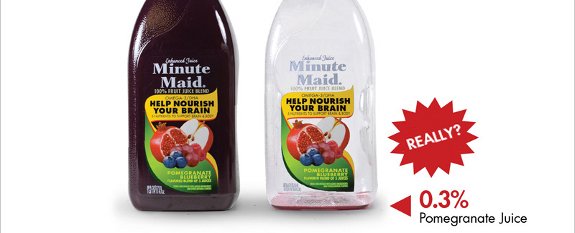
More often than not, the package is the advertisement for the product, not a rendition of what is actually inside. If you want to know what’s really in it, you have to read the ingredients, and this is true of personal care products too.
For example, Sunny D is a group of bottled drinks masquerading as fruit juice, with big luscious looking fruits on the front of their bottles. On the back is the list of ingredients that include water, high fructose corn syrup, synthetic vitamins, GMO oil, gums, flavoring, dyes, and preservative chemicals. Only about 2% of each drink is real fruit juice.
Similarly, the label on Minute Maid’s Pomegranate Blueberry Flavored Blend of five juices is very misleading. Pomegranates and blueberries are the only fruits mentioned in the title, and their photos are prominent on the label. But the juice is 99.4% apple and grape-derived, containing only 0.3% pomegranate and 0.2% blueberry juice.
You have to read labels!
Myth #6. Don’t Worry About Nutritious Food, Just Take Some Supplements
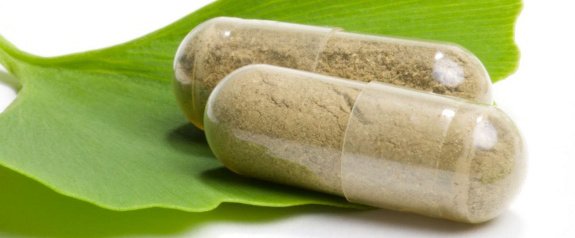
We are living through a time period when supplements have become a craze. Although many targeted supplements can be very helpful, the real bargain comes from buying the highest quality food that you are able to buy.
Nutrients from food have a synergy that can’t be found in most supplements. The human body has evolved eating food, not taking supplements, and it is an expert at processing food but a newcomer at processing supplements. If you want the best from the money you spend, take some time to learn what foods provide what nutrients, and how to plan a balanced diet that will provide most of the nutrition you need.
Examples?
- If you think you aren’t getting enough magnesium, add spinach to your diet on a regular basis.
- If you want omega -3 fatty acids, look for the carton of organic eggs that tells you it provides an ample amount.
- If digestion is an issue, add pineapple to your diet,
- And thwart cancer by bringing home some berries every week.
The best bargain of all is to educate your self.

Thank you Barbara for your article. You raised a question about authentication of advertisement. Really it is difficult to identify the honesty. But manufacturer should be honest for food. It is a matter of morality.
One of the best advantages of living outside of the US is that all that US processed stuff is an expensive import that is almost imposable to fine at your local market. There is nothing like buying fresh locally grown organic produce.